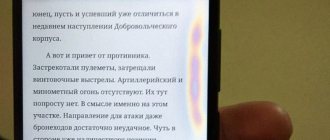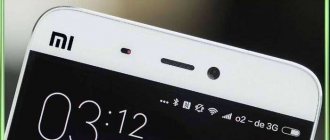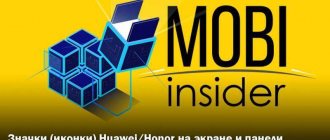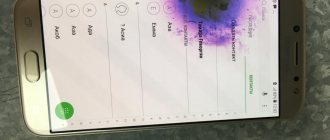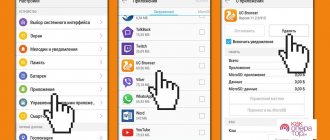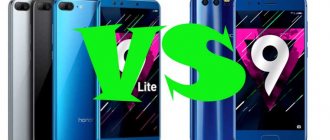Mobile communications have changed a lot over the past 15 years. The speed of mobile Internet has increased, new types of connections have appeared, but the old “herringbone” has not gone away. It indicates the signal level, but not the format.
When you go online on your device, an Internet connection sign appears in the top panel - a letter that indicates the type of connection used. Some standards are used, while others have long been forgotten. What are the differences and advantages of each of the G, E, 3G, H or 4G protocols? What is the h on the phone in the upper right corner? Which protocol is better? Let's figure it out.
G – GPRS (General Packet Radio Service)
This is one of the first Internet protocols for mobile devices. This format allows data transfer at data rates of up to 171.2 Kbps. For that time, this was enough, since most pages were HTML documents without complex animation or multi-level systems.
Also, the sites had almost no advertising (not comparable to what the H format is now), pop-up blocks and notifications. At the same time, smartphones received stable connections and updated basic Internet applications.
Why doesn't 3G work on Android?
Before setting up 3G on Android, make sure that your smartphone supports this type of network. All information on this issue can be found in the documentation supplied with the device or on the Internet.
It is also worth checking whether there is 3G/4G coverage in your city. For example, in the cities of Ukraine the introduction of 4G is only being planned, so it will not be possible to use ultra-fast Internet even if you want to. You can familiarize yourself with the coverage areas of the largest Russian mobile operators at the following links:
- MTS
- Beeline
- Megaphone
- Tele 2
All smartphones automatically receive mobile Internet settings from the network operator, but sometimes the gadget cannot correctly install the necessary options, as a result of which access to the mobile Internet is lost. You can find out how to choose an access point and set the correct settings from our article “How to set up the Internet on Android.”
E – EDGE (Enhanced Data Rates for GSM Evolution)
An intermediate type of connection between 2G and 3G. With an Internet speed of 380 Kb/s, it has been popular for a long time. The E standard is almost never used (operators provide it to users who have older smartphone models). A special feature of this format is its high throughput. A stage on the way from GSM to UMTS.
EDGE does not require changing antenna parameters, that is, hardware upgrades. However, the base station subsystem has been modified. This applies to transceivers that supported 8PSK modulation for software updates
.
Mobile devices comply with the stated requirements, code scheme in EDGE, software and modulation. The first phone of this type was released in 2002. It was Nokia 6200.
The evolution of mobile data transmission
What do the G, E, 3G, H, 3G+, H+, 4G icons mean on the phone?
In modern smartphones, at the top of the screen you can always find a line on which there is a signal strength icon, a battery charge level icon, etc. G, E, 3G, H, 3G+, H+, 4G , and sometimes may also appear in the line . What do they mean? The answer is actually simple - the icon shows which transmission technology is currently in use. In other words, this is the technology that is used to connect your smartphone to the Internet.
Now let's take a closer look at each icon.
— G from English. GPRS - General Packet Radio Service, general packet radio communications (2G). GPRS allows the user of a cellular network to exchange data with other devices on the GSM network and with external networks, including the Internet. The maximum speed is 171.2 Kbps, but in practice it is usually lower.
— E from English. EDGE. Digital wireless data technology for mobile communications, operating over 2G and 2.5G networks. The maximum speed has already reached 474 Kbps.
- 3G from English. third generation - third generation. Third generation mobile communication technology, which also provides high-speed Internet access. UMTS technology with HSPA add-on is used. The maximum speed of 3G networks reaches 3.6 Mbit/s.
- H, 3G+, H+ . HSPA (High Speed Packet Access) technology allows you to transfer data over UMTS networks at very high speeds up to several tens of Mbit/s! However, you need to take into account that not all devices support this speed.
- 4G (LTE, LTE-A) . As you might have guessed, the technology got its name from the phrase fourth generation - fourth generation. These are promising technologies that allow data transmission at speeds exceeding 100 Mbit/s for mobile subscribers and 1 Gbit/s for landline subscribers.
The indicated figures for data exchange speed are conditional. Much depends on the operator, the user's location, the user's device, etc. In real conditions, the data transfer speed may vary significantly. In many cities, the Internet connection speed on smartphones is already so high that you can watch HD videos directly from your mobile device.
RELATED ARTICLES ON THE TOPIC:
- Combating reverse polarity RV4LX offered a solution to combat reverse polarity...
- Information reflectors for Russian-speaking radio amateurs List of information sources (forums-reflectors) on the INTERNET for Russian-speaking radio amateurs via E-mail subscription….
- Amateur radio HF beacon RR9O In November 1999, the Russian HF radio beacon RR9O went on the air, which was included in the NCDXF/IARU International Beacon Project of 18 synchronous beacons operating on five high-frequency bands around the world. The very first KB beacon from the international network of synchronous beacons NCDXF/IARU International Beacon Project, located…
- We tie knots on antenna braces When installing antennas for guy wires, radio amateurs sometimes use “smooth” cords made of nylon and similar materials. In this case, the problem usually arises of making reliable, “non-slip” knots (end or connecting two cords). The figure shows options for the implementation of such units, proposed by the American shortwave K7HDB....
- Restoring the fastening of a plastic case The cases of small-sized radios, players and other radio equipment are often fastened using self-tapping screws that are screwed into plastic bushings. After several disassemblies, the diameter of the hole in the bushing increases, and the screw “does not hold.” You can restore the fastening in a simple way....
- Amateur radio regions of Ukraine The structure of call signs, the procedure for issuing them in Ukraine is regulated by the Regulations on the structure and procedure for assigning call signs to amateur radio stations….
- Switching power supply from an energy-saving lamp In this article you will find a detailed description of the process of manufacturing switching power supplies of different powers based on the electronic ballast of a compact fluorescent lamp. You can make a switching power supply for 5...20 Watts in less than an hour. It will take several hours to make a 100-watt power supply...
- Transformerless source on KRENK When it is necessary to power from the network some home device with a small current consumption (up to 150 mA), which operates autonomously (clock, night light, electronic thermometer, etc.) and has a plastic case (the danger of electric shock is eliminated ), it is advisable to use transformerless power supplies. In the proposed source,…
LTE - Long Term Evolution
This protocol is a high-speed connection with the best performance parameters. In theory, speeds up to 100 Mb/s.
At this speed, the user can easily download online movies in HD quality through a browser, download or listen to music, or send large files by mail.
Important: LTE is often confused with 4G, a communication standard that supports speeds above 100 Mbit/s. In fact, 4G is a designation for several types of communications in development (LTE Advanced and WiMAX 2), as well as LTE 4G and WiMax.
Why do the letters of the signal indicator change periodically?
There may be several reasons for this:
- You are moving. Signal coverage areas are uneven, and when driving, for example, a cell phone must constantly switch between nearby cell towers to stay connected. If the nearby towers do not support your phone's best communication technology, the phone switches to the previous one. For example, you moved from a 4G coverage area to a 3G coverage area - the icon changed from “4G” to “H+”;
- You are in an area with poor signal reception, for example, in a building or in a forest. In conditions of a weak signal, a mobile phone often downgrades the communication technology from 4G to 3G or 2G, this is due to the fact that the range of 2G technologies is much wider than that of 3G or 4G, and where the latest standards no longer work, only 2G remains.
- You are making a call. LTE, EDGE and GPRS technologies do not support direct communication, and when making a call the phone is forced to switch to other communication standards. For calls via LTE, there is VoLTE technology: voice over LTE, but it is not widespread in Russia.
In the article, we reviewed all the current communication standards in Russia for 2021 and their designations, which will allow you to navigate the icons on your phone and understand through what technology and at what speed you access the Internet.
H (HSDPA – High Speed Downlink Packet Access)
The h protocol on the phone is a simplified technology based on 3G. Transitional option to fourth generation mobile communications. The signal transmission speed is 14.4 Mbit/s. A feature of this standard is that it borrows a method for increasing data transfer speeds from 2G networks. Thanks to this protocol H, it has become possible to transmit three times more information with one signal.
What is the h standard, and what are its parameters? In a simplified form, it has a data transfer rate of 7.2 Mbit/s.
The technology allowed mobile devices to quickly load websites, download small video and audio files, watch HD movies, and listen to music in different formats.
The main difference between H and H+ is the speed of information transfer, various files, and loading of website pages.
Other types of icons on different phones
Smartphone manufacturers often slightly modify familiar icons, and therefore “moving” to a new device may be more painful than we would like. Especially if the phone has its own, unique icons that you just can’t figure out.
On a Samsung phone
Samsung gadgets have their own character set. Most of them look unremarkable, but there are some unique icons that are worth mentioning separately.
This is the logo of Kies Air, an application that helps transfer data from your device to your PC. This is convenient synchronization without wires. The program is specific only to Samsung phones and tablet computers.
This icon, which looks similar to Skype, indicates that a Samsung account is being created.
Your phone is connected to the DLNA network.
Internet traffic saving is included. If you don’t have an unlimited tariff, the phone can help you save money.
On a Huawei phone
Huawei smartphones have their own characteristics. For example:
LTE is usually displayed with these three letters; Huawei phones also support HD Voice, high-quality audio transmission using VoLTE.
Huawei shows the traffic saving mode with this interesting picture. There are similarities with Samsung, but they are not significant.
